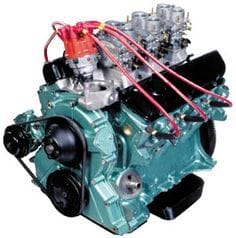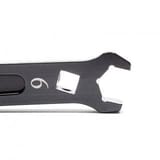Is It Worth Putting a Ford V6 3.0L Engine in My Hilux SFA?
If you're restoring or upgrading a Toyota Hilux SFA, chances are you’ve heard someone suggest throwing in a Ford Essex V6 3.0L engine. It's a popular conversion in South Africa, mainly because of availability, simplicity, and that unmistakable V6 grunt.
But is it actually a good idea—or are you just signing up for future headaches? Let’s dive into the pros, cons, and key considerations before you commit to this engine swap.
Why People Do the Ford V6 Swap
The Ford 3.0L V6—commonly known as the Essex V6—has been around for decades. Originally fitted in the old Cortinas and Ford Rangers, it’s known for its torque, sound, and simple mechanics. Many SFA Hiluxes in South Africa have already had this engine fitted, especially before the rise of more modern diesel and EFI options.
Reasons people go for it:
- Cheap and easy to find
- Strong low-down torque for 4x4 trails
- Simple wiring (no ECU)
- Local mechanics know it well

The Benefits of the Ford 3.0L V6 in a Hilux
1. Budget-Friendly Power
Compared to modern engines, the Essex V6 is a relatively affordable upgrade. If you’re on a tight budget, it’s a way to get a bigger motor in your Hilux without breaking the bank.
2. Easy to Work On
There’s no complicated electronics, turbos, or sensors. Almost any backyard mechanic can tune or repair it, which makes it ideal for DIY guys.
3. Good Low-End Torque
If you're rock crawling or trail riding, the V6 gives strong torque down low—ideal for slow, controlled off-road driving.
4. Parts Are Readily Available
Because of how popular the V6 has been in SA, spares are cheap and easy to find, both new and second-hand.
The Downsides to Know Before Swapping
1. Fuel Consumption
The Essex V6 is not known for sipping fuel. If you’re planning long trips or daily driving, fuel costs can become a real issue—especially compared to diesel options like the 2L or KZTE.
2. Heat Management
It tends to run hot, and in a cramped SFA engine bay, cooling can become a problem. You’ll need to make sure you install proper fans, radiators, and heat shielding.
3. Not As Reliable as a Toyota Engine
Let’s be honest—Toyota engines are built like bricks. While the V6 can be reliable with good care, it doesn’t quite match the legendary dependability of a 3L, 2L, or even 4Y.
4. Not Ideal for Re-Sale
A Hilux with a Ford engine isn’t everyone’s dream. If you ever plan to sell the bakkie, some buyers may prefer original Toyota powerplants.
🔗 Check out a discussion thread on V6 swaps
Should You Do It?
If you want a budget build, like the sound of a V6, and don't mind higher fuel bills or some extra maintenance, the Ford V6 can be a fun and torquey upgrade. It’s simple, local, and gets the job done—especially if your Hilux is for trails or weekend play.
But if you're looking for long-term reliability, economy, and clean power delivery, you may want to consider engines like the Toyota KZTE, 2.7 petrol, or even 2UZ V8 if you're up for something beefier.
Conclusion
The Ford V6 3.0L engine definitely has its place in the South African Hilux scene. It’s tough, torquey, and has a bit of old-school charm—but it comes with trade-offs in fuel use and heat. Whether it's worth it really depends on what you're building your Hilux for.
Would you ever do a V6 swap—or have you already done it? Let me know what you think!
